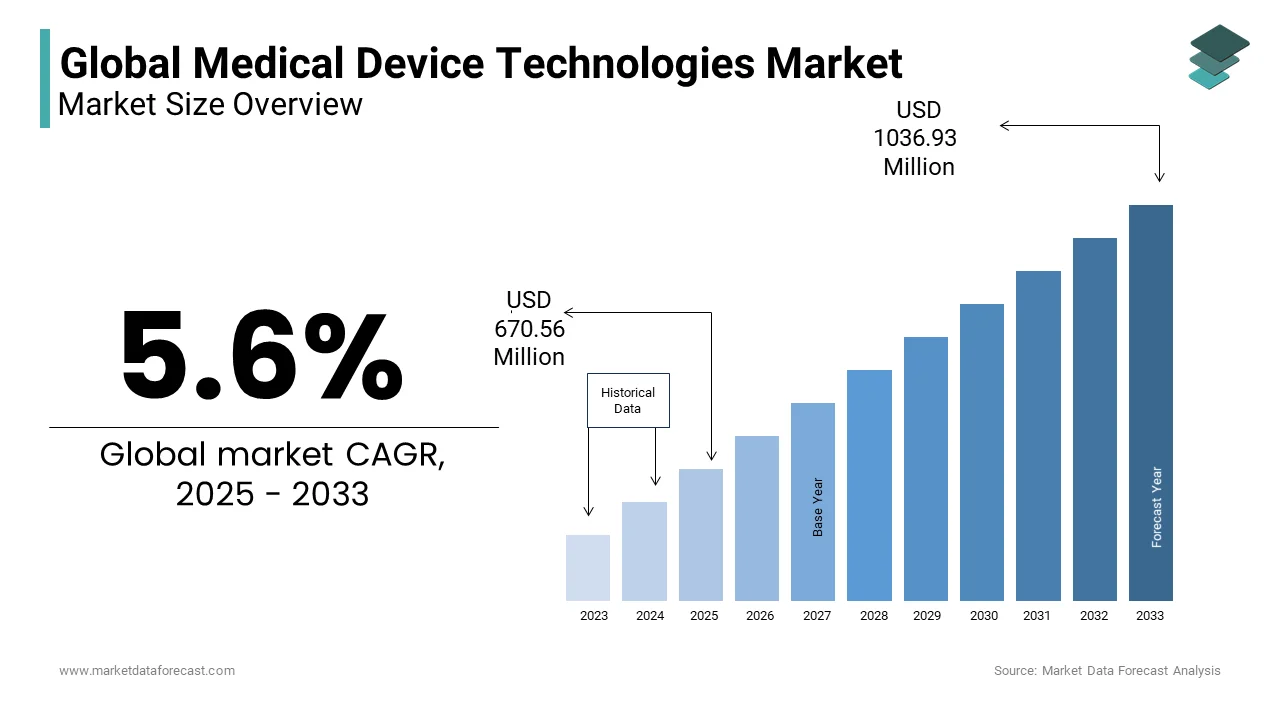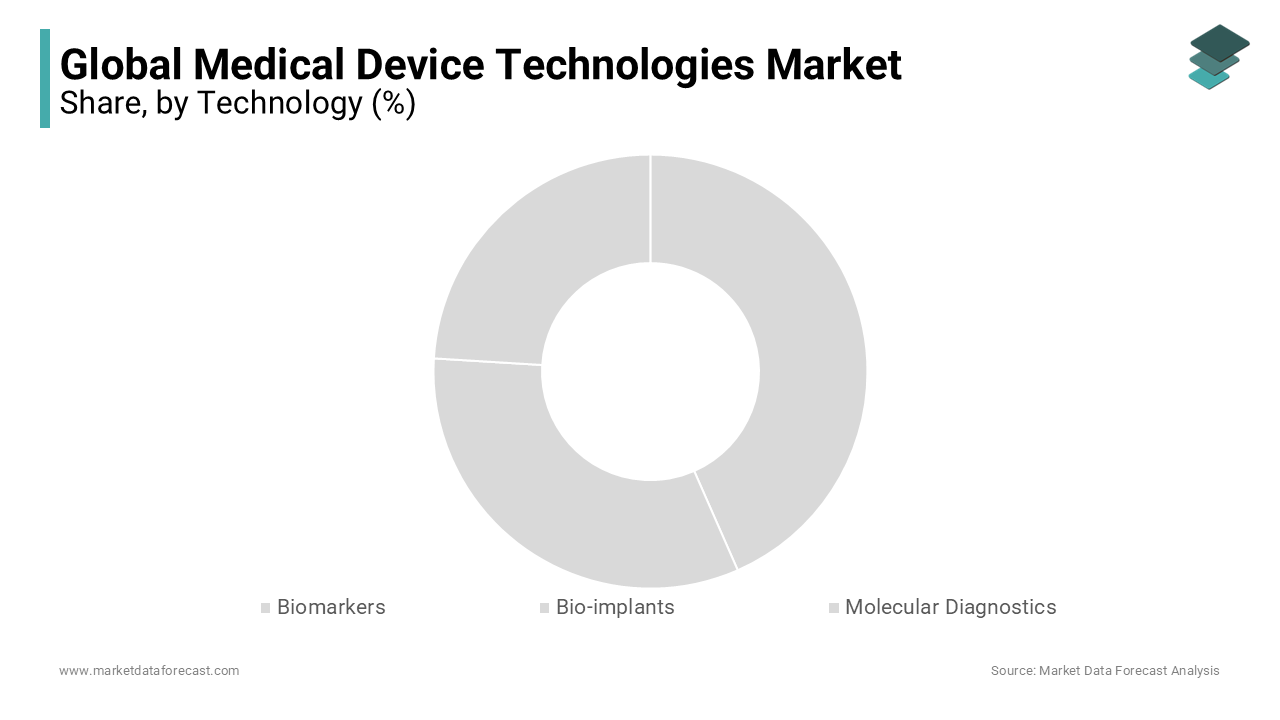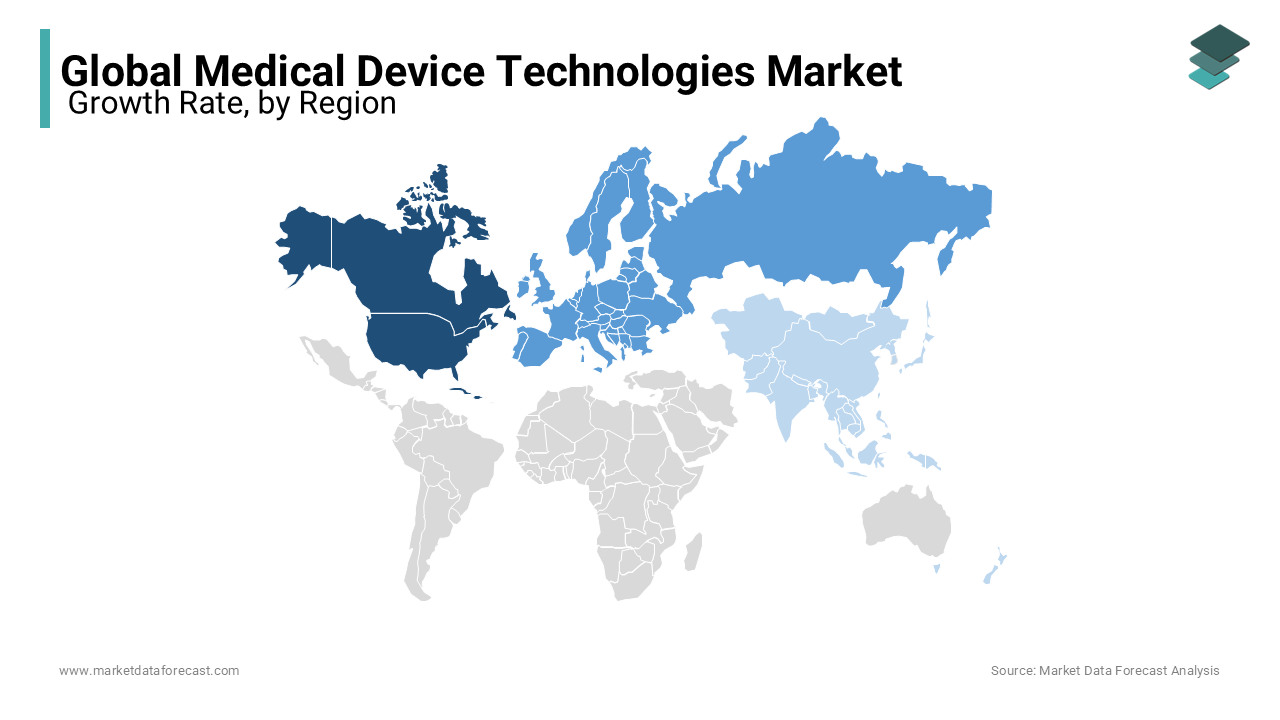Global Medical Device Technologies Market Size, Share, Trends & Growth Forecast Report – Segmented By Device Type (Electro-medical Equipment, Irradiation Apparatus, Dental Apparatus, In Vitro Diagnostics (IVD) Devices, Kidney/Dialysis Devices, Diagnostic Imaging Devices, Ophthalmology Devices, Orthopedic Devices, Endoscopy Devices, Diabetes Care Devices, Anaesthesia & Respiratory Care Devices and Wound Management Devices), Technology and Region (North America, Europe, Asia Pacific, Latin America, and Middle East & Africa) - Industry Analysis (2025 to 2033)
Global Medical Device Technologies Market Size
In 2024, the global medical device technologies market was valued at USD 635 Million and it is expected to reach USD 1036.93 million by 2033 from USD 670.56 million in 2025, growing at a CAGR of 5.6 % during the forecast period.

The landscape of the medical device industry is witnessing increased traction towards wearable devices and remote patient monitoring. Also, the integration of artificial intelligence and machine learning-based systems is being progressively adopted to better perform activities, analyse data and give personalized treatment. Moreover, the manufacturers in the industry are utilizing 3D printing technology to precisely and flawlessly produce medical devices like customized prosthetics, tissues and implants which is influencing the market growth rate. Further, to enhance the accuracy and lower the recovery period surgical robots are being put to use for performing minimally invasive procedures. Apart from all these, the penetration of virtual care and telehealth services in North America, Europe and certain Asian countries is also fueling the market share.
Likewise, in New Zealand the industry is led by Fisher & Paykel Healthcare and has big and stable market restrictions for entries. Still, there are several start-ups engaged in innovating products like smartphone applications or wearables which provide protected self-monitoring along with remote access to health professionals. In Australia, the pattern is somewhat similar with special focus on robotics, biotechnologies and nanotechnology. Also, computerized and automated designs are seeing a surge in their application enhancing the effectiveness and precision of healthcare.
MARKET DRIVERS
Growing R&D and increased focus of medical technology companies is primarily driving the global medical device technologies market growth.
Favorable support from the regulatory bodies in approving medical devices is another significant attribute driving the growth of the medical device technologies market. Around 27 medical devices in 2017 and 54 medical devices in 2018 received approval clearance from the U.S. Food and Drug Administration. Furthermore, the rising key market players, acquisitions, mergers, and innovations in the medical technology field are expected to fuel the market rise.
Additionally, medical devices have major driving factors, increasing demand for the rising population and diseases. Many hospitals and clinical laboratories adopt fast process mechanization by assuring patients' safety as it provides fast and reliable data on the patient's treatments. The increased demand for rapid industrialization and better treatments further accelerates the market's need. The technological advancements and approvals given by the government authorities are also favoring the market. The growth in private surgical hospitals and ambulatory service centers demands more medical devices and technological innovation, which is expected to support the medical device technologies market to reach new growth heights. Furthermore, the rising interest in minimally invasive diagnostic and surgical procedures in healthcare settings is helping the growth of the market.
MARKET RESTRAINTS
The stringent regulatory environment for medical device technologies is majorly hampering market growth.
The developers of medical device technologies must obtain regulatory approval for commercialization, which takes significant time and expense. Due to this, some of the companies are unwilling to show interest in developing new technologies, which limits market expansion. In addition, the high costs of developing new technologies are another major factor hindering the market growth. Furthermore, limited reimbursement policies for medical devices are impeding market growth. Furthermore, the scarcity of skilled professionals, inadequate healthcare infrastructure in some countries, and poor adoption of medical devices in underdeveloped countries impede the growth of the medical device technologies market. In addition, concerns about privacy and security are showcasing a negative impact on the market growth.
REPORT COVERAGE
|
REPORT METRIC |
DETAILS |
|
Market Size Available |
2024 to 2033 |
|
Base Year |
2024 |
|
Forecast Period |
2025 to 2033 |
|
Segments Covered |
By Device Type, Technology, and Region |
|
Various Analyses Covered |
Global, Regional & Country Level Analysis, Segment-Level Analysis, Drivers, Restraints, Opportunities, Challenges; PESTLE Analysis; Porter's Five Forces Analysis, Competitive Landscape; Analyst Overview of Investment Opportunities |
|
Regions Covered |
North America, Europe, Asia Pacific, Latin America, Middle East & Africa |
|
Key Market Players |
Abbott Laboratories Inc., Becton Dickinson and Company, GE Healthcare, Novartis Diagnostics, bioMerieux Inc., Biomerica Inc., Johnson and Johnson Diagnostics Inc., Olympus Corporation, Qiagen N.V., Siemens AG, Thermo Fischer Scientific Inc., and Zenith Healthcare Ltd. |
SEGMENTAL ANALYSIS
By Device Type Insights
The diagnostic imaging devices segment is predicted to hold a considerable share of the global medical device technologies market during the forecast period owing to the increasing patient population suffering from chronic diseases, rapid adoption of technological developments in the imaging modalities, and rising adoption of minimally invasive diagnostic procedures by healthcare providers. The growing aging population has contributed to segmental growth over the last few years.
The IVD devices segment is anticipated to witness the fastest CAGR during the forecast period. Factors such as the growing demand for personalized medicine, the increasing patient population suffering from chronic diseases, and rising awareness among people regarding early disease detection are propelling the segment's growth.
By Technology Insights
The biomarkers segment accounted for the largest share of the worldwide market in 2024 and the domination of the segment is likely to continue during the forecast period. The growth of the segment is primarily driven by the increasing patient population suffering from chronic diseases, increasing developments in genomics and proteomics, rapid adoption of personalized medicine, and growing investments by the market participants in R&D. In addition, the growing number of developments in the healthcare infrastructure among the developing countries and increasing per capita income favoring the segment’s growth rate.

On the other hand, the bio-implants and molecular diagnostics segment is predicted to grow promisingly owing to the increasing use of bone, soft tissue, and skin implants, along with the increasing research and development in molecular chemistry.
REGIONAL ANALYSIS
The North American region was the biggest regional segment for medical device technologies worldwide in 2024, followed by Europe and Asia-Pacific. The domination of the North American market is estimated to continue during the forecast period. The growth of the North American market is majorly driven by the increasing healthcare expenditure among the North American countries, the presence of key market participants, the presence of a favorable regulatory environment, and growing investments to conduct R&D around medical device technologies. In addition, the growing adoption of telemedicine and mobile health technologies in North America supports regional market growth. The U.S. market captured the major share of the North American market in 2021, followed by Canada, and this trend is expected to continue throughout the forecast period.

The European market held the second-largest share of the worldwide market in 2024 and is expected to grow at a noteworthy CAGR during the forecast period. Factors such as the growing aging population, strict regulations around medical devices, and growing chronic disease patient population are propelling the European market growth. The adoption of medical technologies is growing rapidly across the European region, which is predicted to boost the growth rate of the European market during the forecast period.
The APAC region is predicted to witness the fastest CAGR among all the regions in the worldwide market during the forecast period owing to the growing healthcare awareness among people, increasing disposable income, and rising adoption of medical technologies. In addition, the presence of emerging nations such as India and China is boosting regional market growth.
Latin America is estimated to hold a considerable share of the worldwide market during the forecast period owing to the increasing number of improvements in the healthcare infrastructure, growing medical tourism, and increasing number of people suffering from chronic diseases.
The Middle East & Africa is estimated to witness a moderate CAGR during the forecast period. Factors such as adopting advanced technology and rising incidences of various health disorders support the medical device technologies market in MEA.
KEY MARKET PLAYERS
Companies leading the global Medical Device Technologies Market profiled in the report are Abbott Laboratories Inc., Becton Dickinson and Company, GE Healthcare, Novartis Diagnostics, bioMerieux Inc., Biomerica Inc., Johnson and Johnson Diagnostics Inc., Olympus Corporation, Qiagen N.V., Siemens AG, Thermo Fischer Scientific Inc., and Zenith Healthcare Ltd.
RECENT HAPPENINGS IN THE MARKET
- In November 2022, Molded Devices, Inc. (MDI), a provider of high-precision, value-added plastic component manufacturing solutions for medical and non-medical applications, announced today that it had acquired GlobalMed Inc. (Canada) and Schauenburg-Truplast (China), collectively known as "GlobalMed," from Schauenburg Hose Technology. In keeping with our worldwide expansion plan, merging GlobalMed and MDI significantly strengthens our capabilities for medical device OEMs.
- In October 2022, Partner at NorthEdge Phil Frame explained why Medtech and medical device businesses should benefit from rising investor interest. In 2021, the private equity sector invested over 151 billion dollars in healthcare globally, more than double the previous year. As a result, the need for ambitious, rapidly expanding healthcare enterprises is at an all-time high. MedTech and medical devices are two industries that continue to draw outside capital.
- In November 2022, Ascom was given the 2022 Worldwide Medical Devices Connection Technology Innovation Leadership Award by Frost & Sullivan, which recently conducted a study on the global medical devices connectivity market. The company offers a vendor-neutral Medical Device Integration (MDI) platform to capture data and events that can adapt to and interact with any vendor's bedside medical device.
MARKET SEGMENTATION
This research report on the global medical device technologies market has been segmented based on the device type, technology, and region.
By Device Type
- Electro-medical Equipment
- Pacemakers
- MRI Systems
- Patient Monitoring System
- Ultrasonic Scanning System
- Diagnostic Imaging System
- Irradiation Apparatus
- X-Ray Devices
- Tomography Devices
- Surgical And Medical Apparatus
- Dental Apparatus
- Dentists
- Dental Hygienists
- Laboratories
- In Vitro Diagnostics (IVD) Devices
- Kidney/Dialysis Devices
- Diagnostic Imaging Devices
- Ophthalmology Devices
- Orthopedic Devices
- Endoscopy Devices
- Diabetes Care Devices
- Anaesthesia & Respiratory Care Devices
- Wound Management Devices
By Technology
- Biomarkers
- Bio-implants
- Molecular Diagnostics
By Region
- North America
- Europe
- Asia Pacific
- Latin America
- The Middle East and Africa
Frequently Asked Questions
Which are the significant players operating in the medical device technologies market?
Abbott Laboratories Inc., Becton Dickinson and Company, GE Healthcare, Novartis Diagnostics, bioMerieux Inc., Biomerica Inc., and Johnson and Johnson Diagnostics Inc are some of the significant players operating the medical device technologies market
How much is the global medical device technologies market going to be worth by 2033?
As per our research report, the global medical device technologies market size is projected to be USD 1036.93 million by 2033.
At What CAGR, the global medical device technologies market is expected to grow from 2024 to 2033?
The global medical device technologies market is estimated to grow at a CAGR of 5.6% from 2024 to 2033.
Which region is anticipated to witness considerable growth in the medical device technologies market?
Geographically, the APAC medical device technologies market is predicted to have the fastest growth rate in the global market from 2024 to 2033.
Related Reports
Access the study in MULTIPLE FORMATS
Purchase options starting from $ 2500
Didn’t find what you’re looking for?
TALK TO OUR ANALYST TEAM
Need something within your budget?
NO WORRIES! WE GOT YOU COVERED!
Call us on: +1 888 702 9696 (U.S Toll Free)
Write to us: [email protected]
